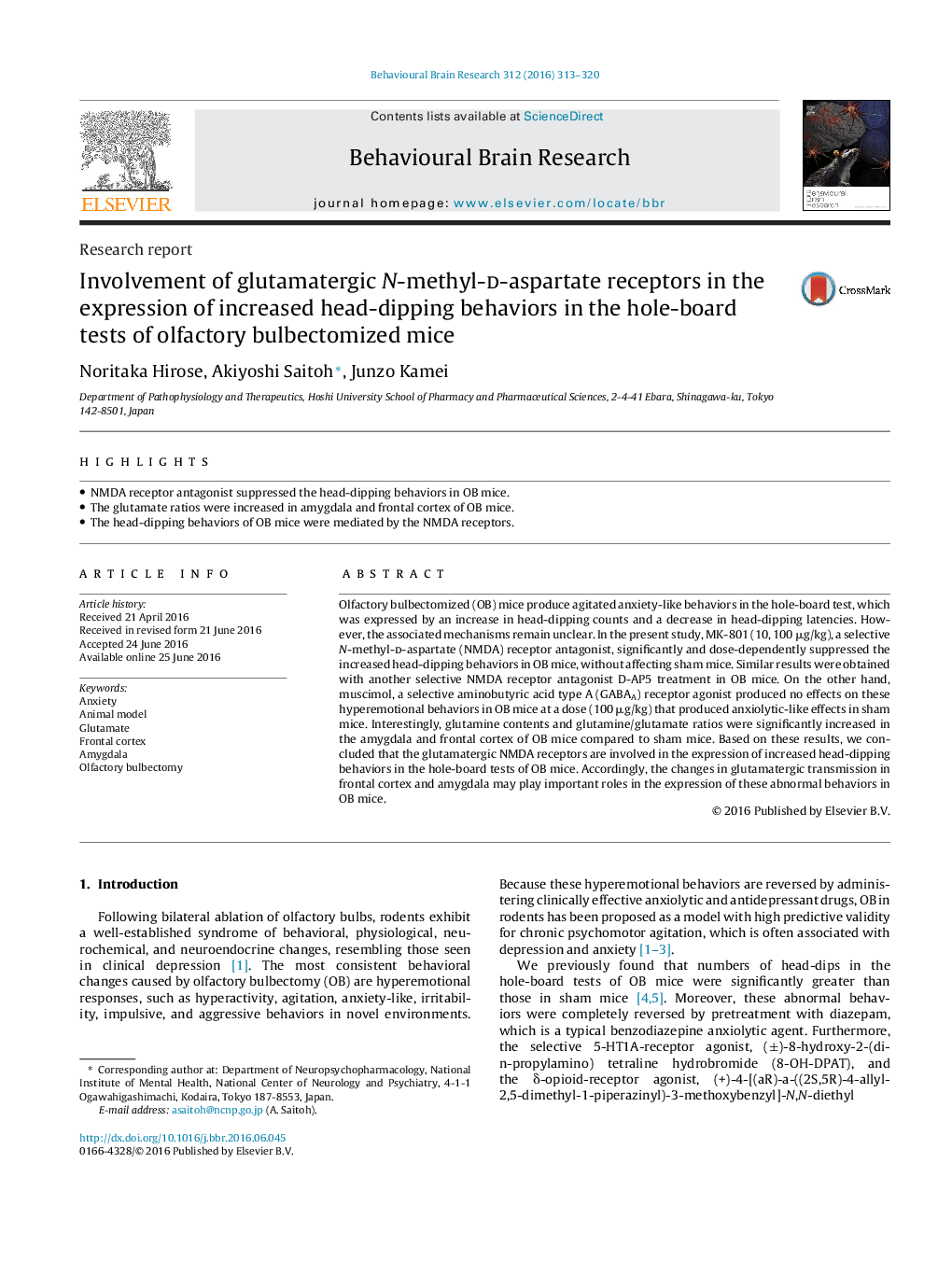| Article ID | Journal | Published Year | Pages | File Type |
|---|---|---|---|---|
| 4312083 | Behavioural Brain Research | 2016 | 8 Pages |
•NMDA receptor antagonist suppressed the head-dipping behaviors in OB mice.•The glutamate ratios were increased in amygdala and frontal cortex of OB mice.•The head-dipping behaviors of OB mice were mediated by the NMDA receptors.
Olfactory bulbectomized (OB) mice produce agitated anxiety-like behaviors in the hole-board test, which was expressed by an increase in head-dipping counts and a decrease in head-dipping latencies. However, the associated mechanisms remain unclear. In the present study, MK-801 (10, 100 μg/kg), a selective N-methyl-d-aspartate (NMDA) receptor antagonist, significantly and dose-dependently suppressed the increased head-dipping behaviors in OB mice, without affecting sham mice. Similar results were obtained with another selective NMDA receptor antagonist D-AP5 treatment in OB mice. On the other hand, muscimol, a selective aminobutyric acid type A (GABAA) receptor agonist produced no effects on these hyperemotional behaviors in OB mice at a dose (100 μg/kg) that produced anxiolytic-like effects in sham mice. Interestingly, glutamine contents and glutamine/glutamate ratios were significantly increased in the amygdala and frontal cortex of OB mice compared to sham mice. Based on these results, we concluded that the glutamatergic NMDA receptors are involved in the expression of increased head-dipping behaviors in the hole-board tests of OB mice. Accordingly, the changes in glutamatergic transmission in frontal cortex and amygdala may play important roles in the expression of these abnormal behaviors in OB mice.
